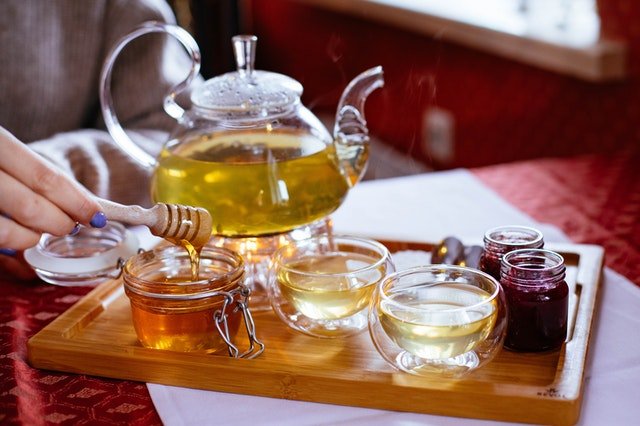
Have you ever wondered which are the healthiest teas? Surely yes.
We have used the current scientific literature: what the existing studies say and what consensus they generate in the scientific community. As always when there is a ranking, there is a bias, but do not suffer. All, and we repeat, all teas are healthy drinks, so you can’t go wrong when choosing.
Ranking of the healthiest teas
On this occasion, we will stick only to the teas themselves. That is to say that we will only analyze the infusions that are made with the leaves of the Camellia sinensis, the tea plant.
It is worth remembering that teas are infusions, but not every infusion is a tea. Despite the fact that, on a daily basis, we talk about chamomile “tea”, ginger “tea” or peppermint “tea”, these are not true teas, but infusions, since they do not come from the tea plant.
Now yes, we get fully into the analysis to determine which are the healthiest teas. A parenthesis before we start: tea, in general, is a healthy drink; In other words, every variety provides different health benefits.
Ranked #1: Green Tea
The truth is that the top of the ranking has been very difficult to define. The final fight was between green tea and white tea, since both are less processed teas and, therefore, maintain a greater amount of their essential nutrients and health properties.
So… why did we choose green tea? Let’s see it.
Camellia sinensis leaves are rich in flavonoids, substances from the polyphenol family that have antioxidant properties. This means that, when they enter your body, they fight free radicals, molecules that generate oxidative stress that triggers all kinds of diseases: heart, cerebrovascular, degenerative and even cancer. The lower the oxidation process, the greater the presence of antioxidants.
In this way, it can be said that the amount of antioxidants in green tea and white tea is higher than that of black, blue or red tea.
In this way, according to some studies, drinking green tea would help lower blood pressure and, thus, the risk of cerebrovascular and heart diseases, reduce the presence of cholesterol in the blood, and prevent diabetes and cancer.
On the other hand, antioxidants help fight premature aging. In other words, regularly consuming green tea would allow you to have younger and smoother skin.
But that’s not all… Green tea is famous for its “slimming” properties, since its consumption would increase metabolism, thus allowing fat burning. At this point, it should be noted that white tea would boost metabolism even more than green tea, as different studies point out.
So why is green tea in the first place? Well, simply because of its caffeine content. Although it is difficult to compare the amount of caffeine that each tea has, since this does not depend only on the variety but also on the growing season, the territory and many other variables, it is possible to say that, in general, green tea It has more caffeine than white tea.
And why would this be good? It all depends on who drinks it, but most people are looking for a stimulating effect in their drink and, if that is the case, green tea provides a dose of caffeine capable of stimulating the brain while its L-theanine favors the relationship. Therefore, we would be talking about relaxed attention and concentration.
If you drink green tea in moderation, you can take advantage of its health benefits, including the stimulating effect.
White tea, a close second
As we already mentioned in the previous point, white tea has come very close to conquering the first place on our podium. We have relegated it to second place because, fundamentally, there is much more scientific literature documenting the benefits of green tea.
White tea is the least processed of the teas, so it would be the one that keeps all its properties and health benefits intact.
In this way, white tea would be the one with the highest antioxidant potential, which would have the greatest protective effect against premature aging and degenerative diseases.
black tea, on the podium
The most consumed variety of tea in the Western world takes the last place on the podium by providing antioxidant substances that help reduce the risk of heart attack and stroke, regulate diabetes and lower high blood pressure. In addition, its caffeine content makes it an excellent option for those days when you need extra energy.
Now, if its properties are similar to those of the two teas mentioned above, why a third place? Well, because of the superior contribution of caffeine and the inferior contribution of flavonoids from black tea . Let us remember that the first substance can be consumed but always in a moderate way to avoid side effects and the flavonoids are responsible for some of the great benefits of tea.
Pu-ehr, a close fourth place

Defining this position, with which we will close the ranking, has not been easy either, since red tea is very healthy. In fact, we’ve been wondering if you shouldn’t be in third place.
Why? Well, because the fermentation process to which it is subjected gives a new and healthy dimension to this tea. For example, it is believed that it would help mitigate osteoporosis, reduce uric acid and, in addition, it would provide an amino acid called GABA that would regulate the production of melanin, that is, it would contribute to the quality of sleep.
And then why have we left it behind black tea? Well, because many of the studies that indicate its benefits have been carried out on animals and there is no 100% reliable evidence that its results are obtained in the same way in humans.
In conclusion, here are the 4 healthiest teas. Remember that this does not mean that other teas, such as oolong or yellow, are not healthy. Of course not! This is a simple analysis that we have carried out based on current scientific information but, like everything, it can be modified in the future.
